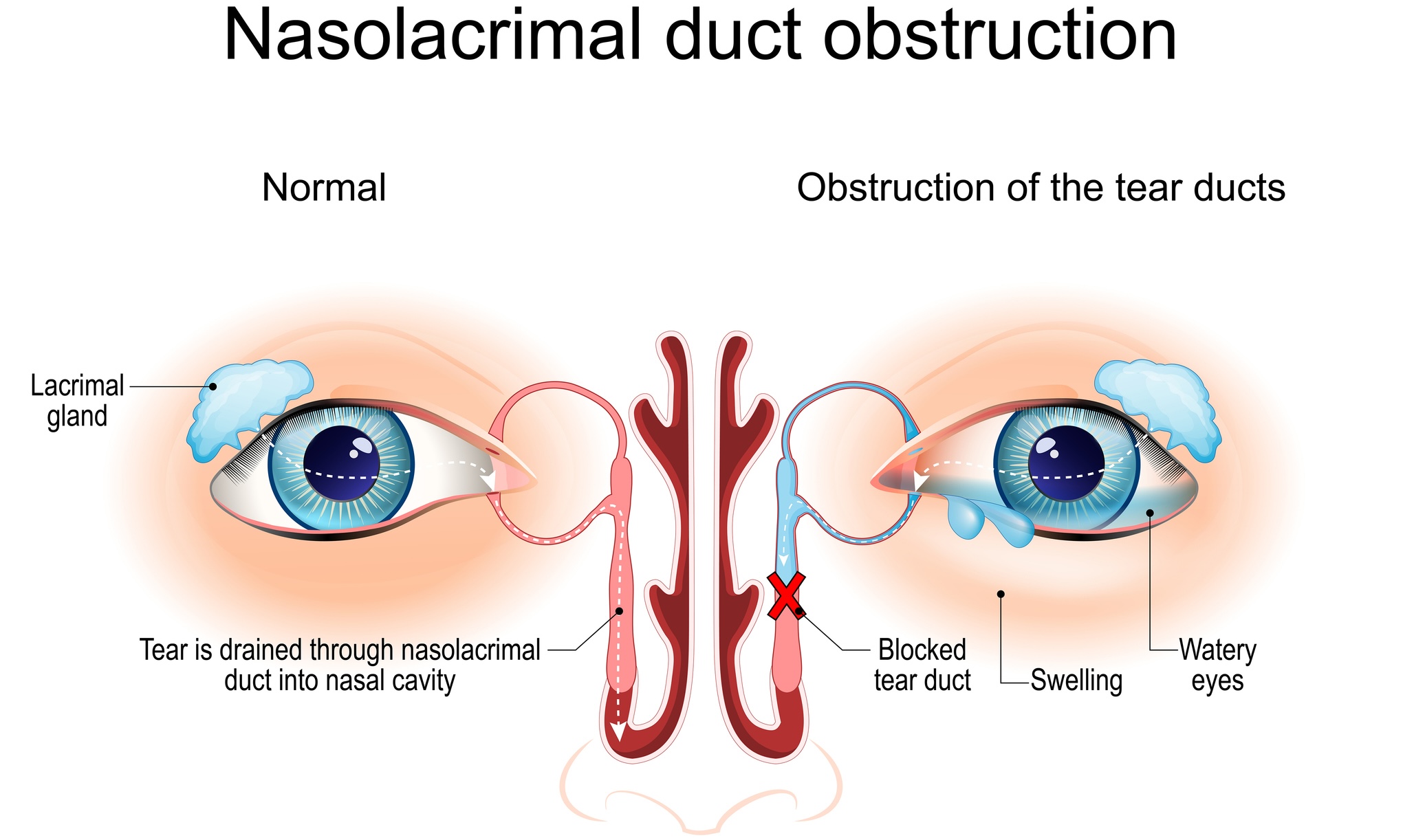Tear duct surgery includes a variety of procedures to treat nasolacrimal duct obstruction and restore proper tear drainage. A blocked tear duct prevents tears from flowing normally through the tear drainage system into the nasal cavity, causing excessive tearing, discomfort, and potential infection. When the nasolacrimal duct or tear duct blockage occurs at the small opening in the lower eyelid, the lacrimal sac, or nasal passage, tear duct obstruction results in excess tears and related complications.
Our oculoplastic surgeon performs tear duct surgery as an outpatient procedure to create a new passageway or new tear drain, bypassing the blocked duct to restore normal tear drainage from the eye to the nose. The surgical procedure may use local anesthesia or general anesthesia depending on the approach and severity of the tear duct blockage.
Tear Duct Surgery Procedures
Tear duct surgery can address several types of blockages, depending on where the obstruction occurs in your tear drainage system. We provide a range of medical and surgical treatments for tearing problems, including:
- Treatment for a blocked external tear drain (punctal stenosis)
- Treatment for a blocked tear drain in your eyelid (canalicular stenosis)
- Treatment for a blocked nasal tear drain (nasolacrimal duct obstruction)
Advanced Technology
Our oculoplastic surgeon utilizes endoscopes and advanced surgical devices for endoscopic lacrimal surgery. This minimally invasive approach allows treatment without a skin incision, resulting in faster surgery, less visible scarring, and a quicker recovery.
DCR Surgery (Dacryocystorhinostomy): The primary treatment for tear duct obstruction. External DCR uses a small incision to create a pathway between the lacrimal sac and nasal cavity. Dr. Mahan has advanced training in Endoscopic DCR surgery, a minimally invasive alternative through the nasal passage, without the need for an external incision.
Balloon Catheter Dilation: A minimally invasive procedure where a small catheter with an inflatable balloon opens the blocked tear duct for partial obstructions.
Jones Tube Placement: For severe cases where DCR surgery is unsuccessful or significant scarring is present, a small glass Jones tube is permanently placed through the lower eyelid to maintain tear drainage from your eyes to your nose.

